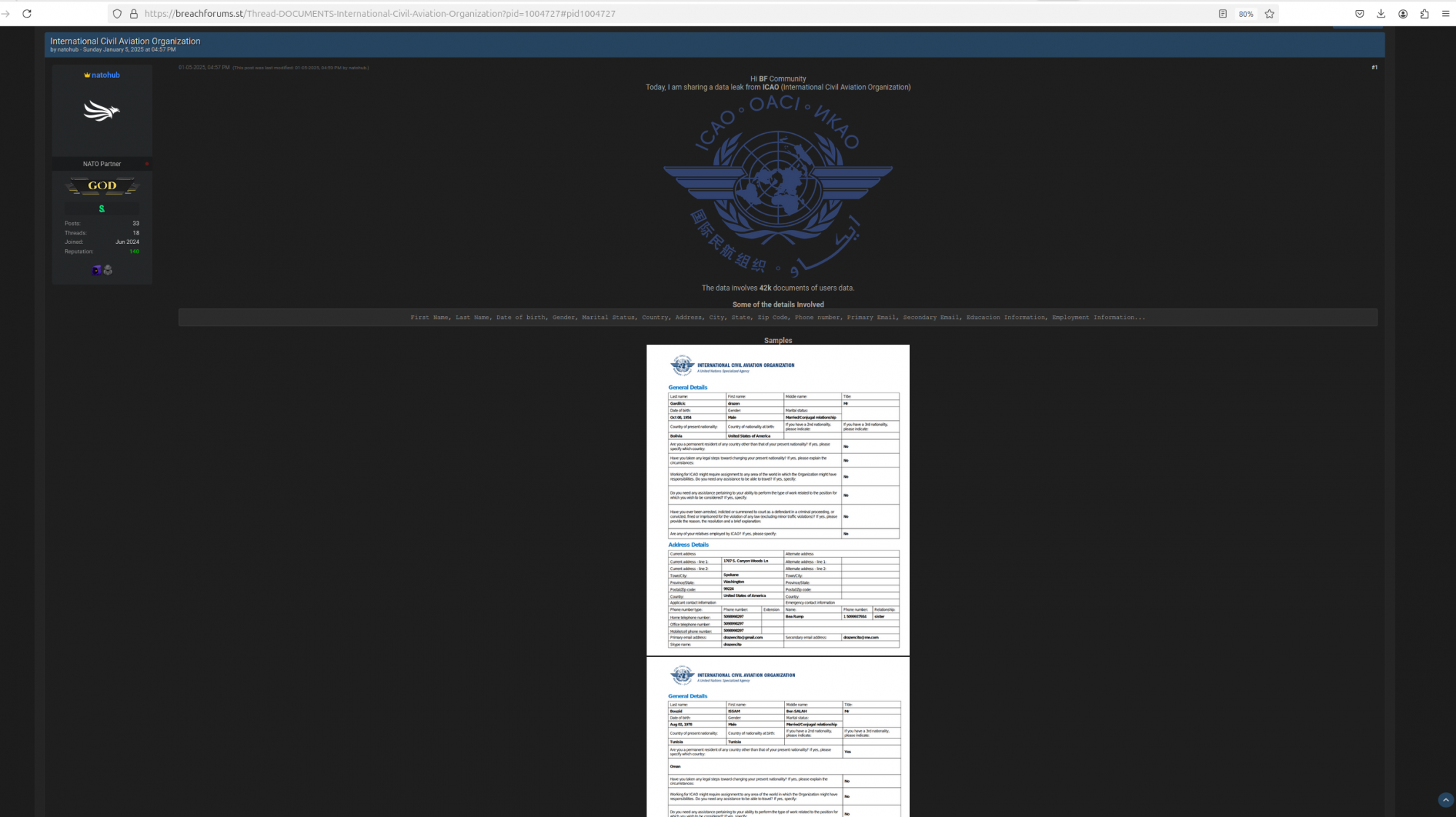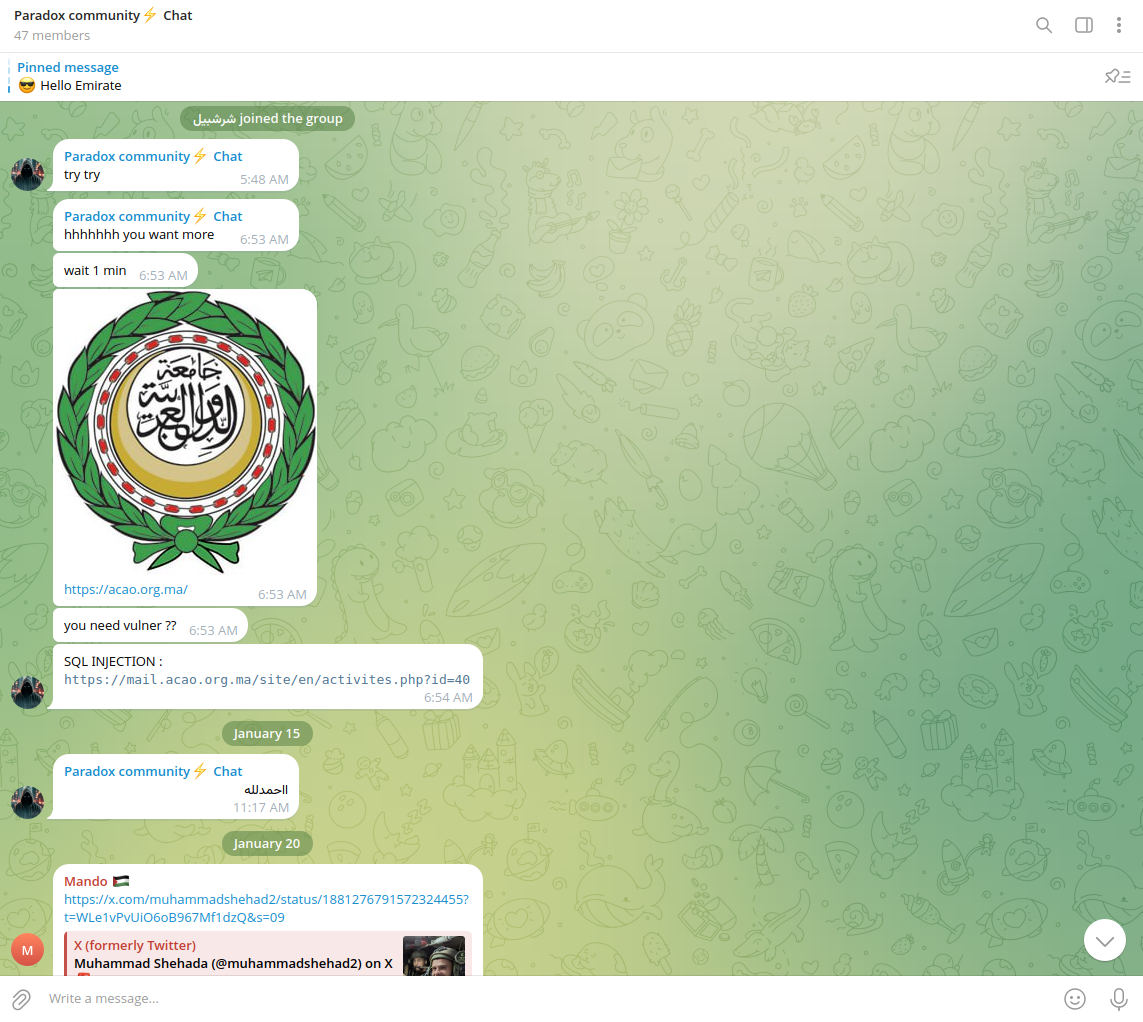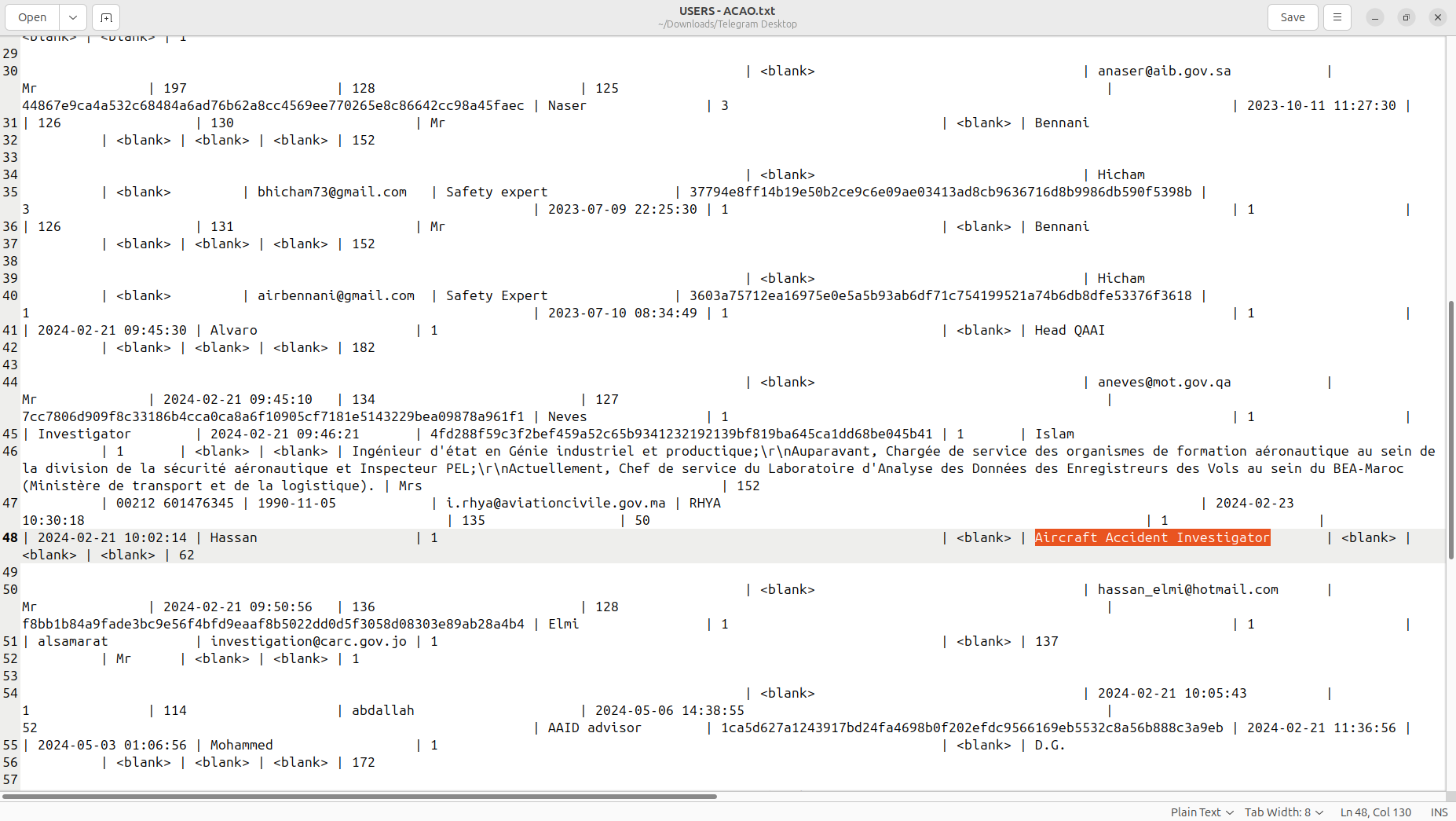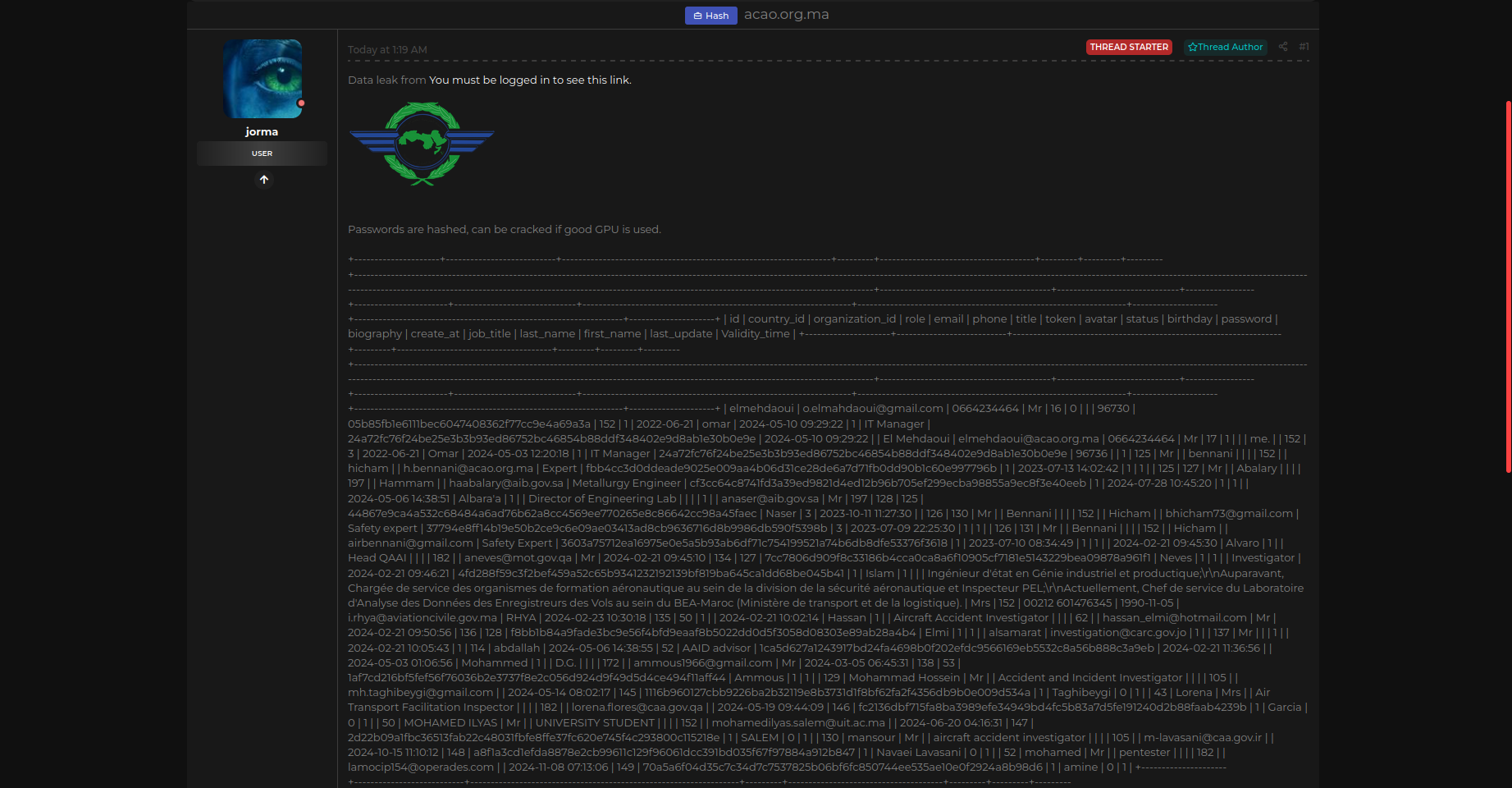ICAO and ACAO Breached: Cyberespionage Groups Targeting Aviation Safety Specialists
Cyber Threat Intelligence

Intro
In one of the previous threat research publications (The Aviation and Aerospace Sectors Face Skyrocketing Cyber Threats), the Resecurity cyber threat intelligence (CTI) team highlighted recent cyber incidents targeting the aerospace and aviation sectors. It emphasized the importance of rigorous cybersecurity risk assessments. The consequences of cyberattacks in the aviation sector can be severe, leading to substantial financial and reputational damage for the organizations involved.
This makes aviation safety experts prime targets, as their insights can be pivotal in executing attacks that maximize impacts. They are also critical for cyberespionage groups and foreign intelligence, especially considering recent aviation incidents that have led to significant geopolitical challenges.
ICAO Data Breach
The International Civil Aviation Organization (ICAO), a specialized agency of the United Nations, is investigating a significant data breach that has raised concerns about the security of its systems and employees data. In the updated statement published by ICAO, the agency said it is “actively investigating reports of a potential information security incident allegedly linked to a threat actor known for targeting international organizations.”
This comes after an individual claimed in a January 5 post on a popular hacking forum to have accessed 42,000 documents from ICAO, including personal information (PII). From this perspective, the actors were interested not in disrupting specific IT/OT processes, but in acquiring targeted intelligence about specific individuals and their digital identity information. Such tactics are pertinent to traditional espionage and human intelligence (HUMINT), where cyberspace is a key channel for obtaining interest data.

After completing a careful review of the data, ICAO confirmed that 11,929 individuals were affected. The compromised data includes recruitment-related information that applicants entered into the compromised system, such as names, email addresses, dates of birth, and employment history.
ACAO Data Breach
Shortly after the ICAO incident, Resecurity identified threat actors targeting the ACAO (Arab Civil Aviation Organization). As a result of a successful SQL injection exploitation in a vulnerable web application, records of staff/members and their credentials were exfiltrated.

Multiple victims identified in the stolen data set included Safety Aviation Specialists and Incident Investigators. Such experts have a first-hand knowledge from the field and may be involved in sensitive communications. Traditional cybercriminal actors would not be interested in it due to the relatively low probability of monetization for profit via Dark Web markets, besides the opportunity to sell it to state-sponsored actors looking for specific targets of interest. Considering the tight timing of the recently disclosed ICAO incident, such a trend of targeting (international aviation organizations) is concerning.

Resecurity has notified the affected agency and shared the acquired data dump, which resulted from threat actors' investigation. The data breach has not been previously disclosed. While specific details about the nature of the leaked data and the extent of the breach remain unclear, the incident highlights ongoing vulnerabilities within aviation organizations. The observed data set includes logins (usernames), hashes of passwords, emails, titles, and communications.
Similar to the ICAO incident, the data has been leaked via one of the popular Dark Web communities on February 4, 2024.

The leaked data set identified representatives of the Qatar Aircraft Accident and Incident Investigation Unit (QAAI), the Aviation Investigation Bureau (AIB) of the Kingdom of Saudi Arabia, the Iran Civil Aviation Authority, the Jordan Civil Aviation Regulatory Commission (CARC), and various members of the Aviation Accident Investigation Division (AAID).
Aviation Incidents On the Rise
Notably, last year was extremely challenging due to the number of significant aviation incidents, some of which triggered a complicated geopolitical narrative based on the circumstances and the root cause investigation:
- Brazilian Plane Crash on December 23 (10 dead)
- Azerbaijan Airlines Plane Crash on December 25 (38 dead, 29 survivors)
- Korean Plane Crash on December 29 (179 dead, 2 survivors)
- Canadian Plane Crash on December 29 (all passengers survived)
- KLM Plane Skid-Off in Norway on December 29 (all passengers survived)
The correlation with the newly disclosed malicious cyber activity targeting aviation safety experts at the beginning of Q1 2025 creates a precedent. It requires increased attention to protecting critical infrastructure and relevant organizations.
Why Cyberespionage Groups Target Aviation Safety Experts?
Cyberespionage groups may target aviation safety experts for several critical reasons, primarily revolving around the sensitive nature of the information they handle and the potential impact of such data on national security and commercial interests.
1. Access to Sensitive Information: Aviation safety experts possess valuable insights and data on aircraft safety systems, operational protocols, and regulatory compliance. This information can be exploited for financial, industrial, political, and diplomatic espionage. By compromising these experts, cybercriminals can access proprietary technologies and safety measures that could be leveraged against competitors or for malicious purposes.
2. Vulnerabilities in Integrated Systems: The aviation industry increasingly relies on Information and Communication Technology (ICT) tools integrated into mechanical devices. This integration has heightened cybersecurity concerns, as cyberespionage groups can exploit vulnerabilities in these systems. Targeting safety experts allows these groups to understand and potentially manipulate these vulnerabilities, posing risks to aviation safety.
3. Rising Cyber Threats: The aviation sector is facing a surge in cyber threats, with sophisticated groups employing zero-day exploits and advanced evasion techniques. For instance, China-based Advanced Persistent Threat (APT) groups pose significant risks to the aviation sector, indicating a strategic focus on aviation-related data. By targeting safety experts, these groups can enhance their understanding of the systems in place and identify weaknesses to exploit.
4. Impact on Operations and Safety: Cyberattacks on aviation safety can disrupt operations and pose significant safety risks. Cybercriminals may aim to create chaos or leverage the threat of operational disruptions to extract ransom or achieve other objectives. By infiltrating the ranks of safety experts, they can gather intelligence that could facilitate such attacks.

